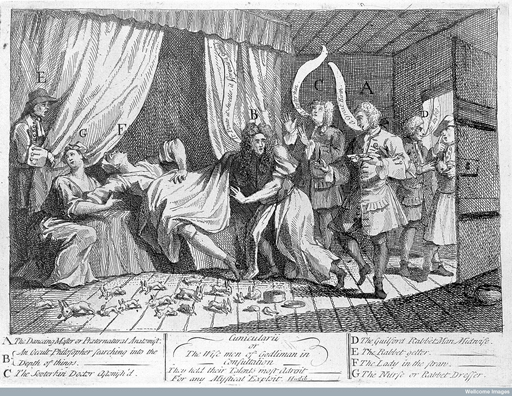1.5 The theory of maternal impression
In Section 1.1 Wind eggs and the uterine mole, you read about the belief that women’s minds, as well as their bodies, could ‘conceive strange and evil schemes and feelings’. This also applied to conception and birth. The philosopher Empedocles described the power of the woman’s imagination to influence their offspring: ‘For often women have fallen in love with statues of men and with images and have produced offspring which resemble them’ (Aetius, 5.12.2, quoting Empedocles fr. A81).
This is one example of how the ancient Greeks and Romans believed in the theory of ‘maternal impression’ – that an object seen, or even just imagined, by a woman as she conceived somehow imprinted itself on the unborn child. The best-known example of this is in the early Greek novel, Heliodorus’ Aethiopica, where the heroine, Chariclea, turns out to have been born in Ethiopia; there, she had been rejected by her black mother, who was afraid she would be accused of adultery because of Chariclea’s white skin. But, the story assures us, this only happened because her mother had been looking at a painting in the bedroom showing Andromeda white and naked.
How was this thought to happen? Return to Week 2 and refresh your memory of ancient theories of seeing [Tip: hold Ctrl and click a link to open it in a new tab. (Hide tip)] . Here, the eye receives the image, then imprints it on the unborn child. This can be used as a form of eugenics, trying to improve the appearance of your children; in his Gynecology, the early second century CE medical writer Soranus (1.39.1) says the tyrant of Cyprus, who was ‘misshapen’, deliberately made his wife look at beautiful statues and ensured their children didn’t look like him.
Activity 2
- Sometimes an ancient idea still survives in popular culture today. Have you encountered anything like the theory of maternal impression?
Search online for the story of Mary Toft, who apparently gave birth to rabbits.
 Figure 7 Mary Toft duping medical professionals into believing she is giving birth to a litter of rabbits; Cunicularii or The Wise Men of Godliman in Consultation, illustration by William Hogarth, 1726
Figure 7 Mary Toft duping medical professionals into believing she is giving birth to a litter of rabbits; Cunicularii or The Wise Men of Godliman in Consultation, illustration by William Hogarth, 1726Why was this story believed and how was it proven to be fake?

